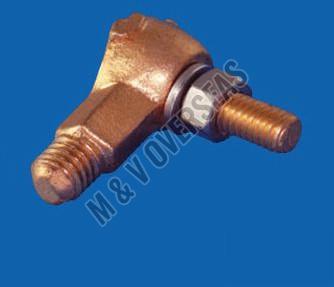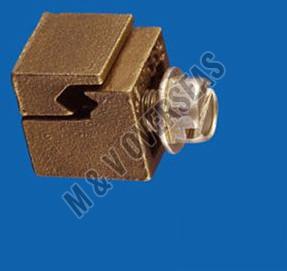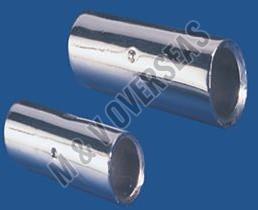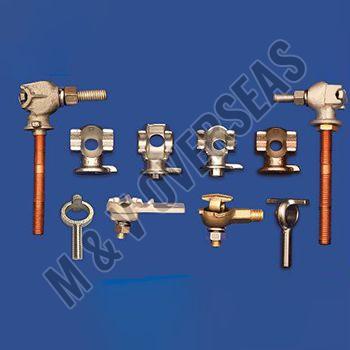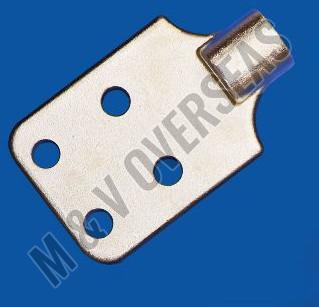View Mobile Number
Metal Connectors
Leading Manufacturers and Wholesaler of Bronze Transformer Tank Connector, Bronze Vise Connector, Copper Inline Connector, Eyebolt Terminal Connector and Spade Terminal Connector from Jamnagar.
| Business Type | Manufacturer, Supplier |
| Material | Bronze |
| Finishing | Polished |
| Application | Industrial |
| Feature | High Performance, Leakage Proof |
| Type | Transformer Tanks |
| Country of Origin | India |
| Business Type | Manufacturer, Supplier |
| Material | Bronze |
| Color | Golden |
| Application | Industrial |
| Feature | Shocked Proof, Superior Finish |
| Country of Origin | India |
| Business Type | Manufacturer, Supplier |
| Material | Copper |
| Color | Silver |
| Application | Electrical Use |
| Feature | Superior Finish, Shocked Proof |
| Country of Origin | India |
Key features and uses of inline connectors and splices include:
- Design: Inline connectors and splices are designed to accommodate multiple conductors in a single connection, enabling the merging of wires or cables in a straight-line configuration.
- Material: They are typically made from materials with good electrical conductivity, such as Copper or Aluminium, to ensure low-resistance connections.
- Insulation: Many inline connectors and splices come with insulating covers or sleeves made from materials like PVC or nylon to provide electrical insulation and protect the connection from moisture, dust, and physical damage.
- Types: Inline connectors and splices come in various types, such as butt splices, inline wire connectors, and insulated inline connectors, to suit different applications and wire sizes.
- Termination: They are attached to the conductors using crimping, soldering, or compression methods, depending on the connector type and application.
- Applications: Inline connectors and splices are used in a wide range of electrical systems, including automotive wiring, home electrical installations, industrial wiring, and control circuits.
- Easy Installation: Inline connectors and splices offer a convenient and easy-to-install solution for joining multiple conductors, eliminating the need for complicated twisting and taping.
- Electrical Safety: Properly installed inline connectors and splices maintain electrical safety by providing secure connections and preventing accidental contact with live conductors.
- Reusability: Some types of inline connectors and splices are reusable, allowing for disconnection and reconnection when needed.
| Business Type | Manufacturer, Supplier |
| Material | Bronze, Copper |
| Application | Industrial |
| Feature | Proper Working, Sturdy Construction |
| Type | Terminal Connector |
| Country of Origin | India |
Applications
- Power Distribution Systems:They can be used in power distribution systems to connect power cables, conductors, or wires to terminals on transformers, circuit breakers, switchgear, or other components.
- Grounding and Bonding:Eyebolt connectors are often used in grounding and bonding applications to establish a reliable electrical connection between equipment and grounding conductors, ensuring safety and proper grounding of electrical systems.
- Electrical Panels:These connectors can be used in electrical panels and control cabinets to connect wires to terminal blocks or busbars.
- Battery Connections:Eyebolt terminals are commonly used to connect battery cables to battery terminals in automotive, marine, and industrial battery applications.
- Industrial and Machinery Wiring:In industrial settings, eyebolt connectors can be used to establish connections in machinery, control panels, and equipment wiring.
- Renewable Energy Systems:They are used in renewable energy systems such as solar and wind power installations to connect cables and wires to inverters, charge controllers, and other components.
| Business Type | Manufacturer, Supplier |
| Material | Bronze |
| Color | Silver |
| Application | Industrial |
| Type | Terminal Connector |
| Country of Origin | India |
Features
- Crafted from high copper content alloy and Tin plated
- For use with Aluminum or Copper compression or bolted type lugs
- Spade Terminal Spade Connector lug mounting holes are 9/16” diameter with 1-3/4” NEMA (National Electrical Manufacturers Association) spacing
- Bronze Spades Can be supplied with studs bonded to terminal
- We cast and offer Bronze spades in CDA 833, CDA 836, CDA 954, CDA 955, CDA 956 grades or any special alloy needed
- These Spades – Spade Terminals Spade Connectors can be supplied with stud locking set screws (may be offered with stud locking set screws )

